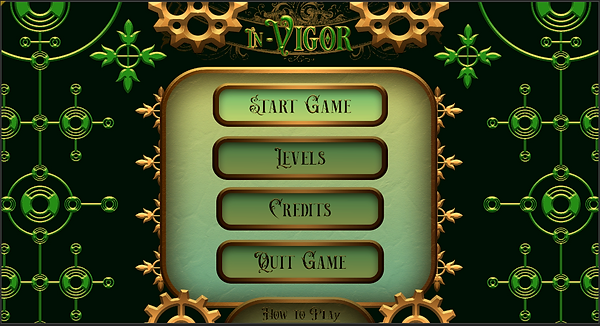Game Designer
InVigor
Capstone Project
Build Date: 6/8/2022 - 10/28/2022
Navigate Quickly
Introduction
This Project was my Capstone Project wherein three months I worked with a team of 5 designers to make a game using an existing game as a close reference. We choose Bioshock Infinite. This ultimately turned into a prototype.
The experience quickly morphed into an action game that included alien boss fights, combat, and a companion that will help you free the human race.
Project Details
What I did:
-
Help take the project from Pre-Production to Content Complete and Whitebox Playable
-
Worked using Unreal Level Sequencer to make small cutscenes during gameplay
-
Created the Ability Switching System and UI
-
Created a Scalable Interactable System
-
Created 2 Levels
-
Communicated Changes through Jira
What I had help with:
-
Weapon Pickup System by Scott Rudrow
-
Enemy AI by Joseph Sobrino-Torres
-
Chest Lootables and Blink Mechanic by Devin Sweedler
-
VFX/SFX and the Boss Fight by Nazir Vargas
-
and Countless Tutorials
Key Takeaways
-
This project taught me the importance of having a cohesive vision for the game, and how to communicate that idea to a team.
-
Sometimes the simplest solutions is the best solution.
-
I learned about how a level sequencer can be used to bring a scene to life, and give feedback to the player as they make their way through the levels.
-
Through this project, I found that I really enjoy level design work and the process of scripting out fun gameplay scenarios
-
Creating Visuals to communicate ideas is a lot better than just using words.
Pre-Production
Since the game started life as the recreation of Bioshock Infinite. To familiarize myself with the target game I watched a long-play on youtube taking notes on the different aspects of the gameplay. Putting all this information into a Confluence page to share with the team (Link to the research page).
With this information, we decided on the design pillars and identity for the game.
Game Identity
An action-packed, sci-fi horror adventure which emphasizes the relationship between the player and their companion.
Design Pillars
-
Player Avatar and AI Avatar Companionship.
-
Ability-focused, first-person shooter Combat.
-
A linear level progression that entices the player towards Exploration.
System Design
We set out to create the systems that would become the backbone of the game. I was in charge of abilities, lootable objects, and the item shop.


Used a data to allow designers to decide what to put into the Item Shop

Showcases some of the logic used to manipulate the player avatar in order to adjust values.

Item Shop Implementation

The first implementation of the loot object. The intention is that the player will


The Loot object randomized through all of these objects

The first implementation of the loot object. The intention is that the player will
Lootable Objects Implementation

Showcasing the Ability Wheel Working in game

The Material Instance active angle parameter communicates with the controller to set the correct ability Allowed for the ability wheel to work with as many abilities as were needed

Bioshock ability wheel used as a reference for the system implemented.

Showcasing the Ability Wheel Working in game
Ability Wheel Implementation
I also created the base interactable object. This was intended to be used to communicate to the player that they could interact with objects in the world. This was done with a pop-up message on the screen, and the option to have an item blinking. The popup was tied to a collision sphere around the player. Most interactable objects were children of this actor.
The pop-up would be removed once the player left the collision box. This led to a bug that would keep the interaction pop-up message on the screen if the collision sphere had multiple interactable objects on it.
I had a hard time figuring out how to fix this problem since I really wanted the player to interact with objects by having to look directly at them. Ultimately we moved to sphere trace for the interaction, but this taught me to be flexible.

Blinking Interactable
Interaction on screen through walls
To not be too tied to an idea what is the most important is how the player feels when playing. This experience led to me being more player-focused, and sometimes the simpler solution is the best.
After creating the systems we started to create levels.
Level Design
I was in charge of the 2 levels, A tutorial level that introduced the core gameplay mechanics and a level that used switches that could be interacted with via shooting or throwing ability. The main constraint of the levels were that they should shorter levels anywhere between Three to Ten minutes.
Design Process
My process for designing the levels was to plan them out on paper in words. Planning out the goal for the level, and ensuring that all the gameplay beats were hit . I would think about the situation the player would be in. Gather references for that environment. Then jump into quickly blocking out the area for getting the scale of the levels. Then playtesting and iterating to ensure the feel of the level was correct.



Lighthouse Level (Tutorial)
Level Walkthrough
Full Playthrough of Tutorial Level
UI/UX Design
Player Hud
Working with our artist I was able to implement the UI into the game and create a more uniform experience. I created a document to present to the team in order to ensure everyone was on the same page with the new implementation (Link to the Document).
The artist then created png files for me to implement into the game. I incorporated them into the existing hud taking time to correctly anchor everything to work on all display sizes.
Below are the different iterations:



Main Menu/Pause Menu

Buttons light up and play sound as the player hovers over them

Both Designs were created by Ricky I was in charge of implementing them in game


